
As in Hans Christian Andersen’s fairy tale The ugly duckling, can a small, insignificant cheap DAC become a well-sounding high-end DAC? In most cases the difference between an economical DAC and a high-performance DAC is found in the analog output stage. Take for example the Douk Audio DSD 1796 (price below 100,00 euros): it is equipped with an excellent XMOS interface and an equally good DSD1796 DAC characterized by 24 bit resolution, 192 kHz sampling frequency, 4 mA current differential output.
The idea is to replace the analog output stage based on modest SMD op amp chips with a high performance I / V conversion transformer T1 ( Sowter 8347F ) followed by a tube, trasformer output T2 ( Lundahl LL1689 P-P ) push-pull design.

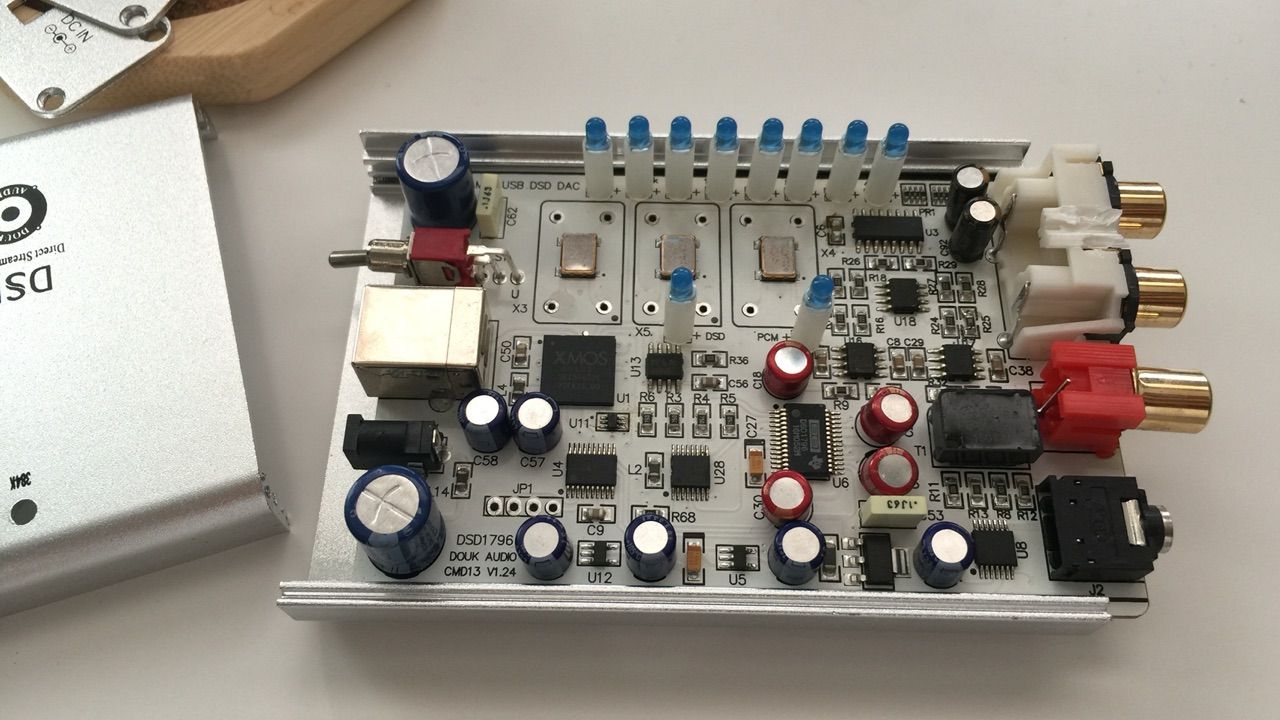
The following scheme is taken from DSD1796 data sheet but is almost identical to Douk Audio board.
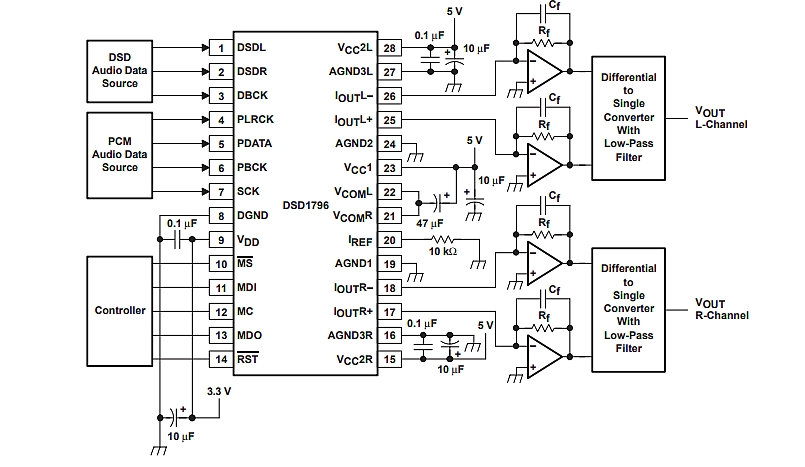
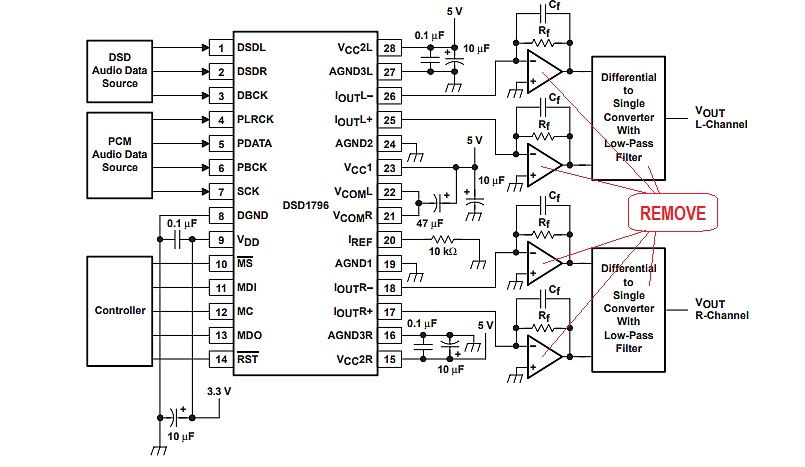
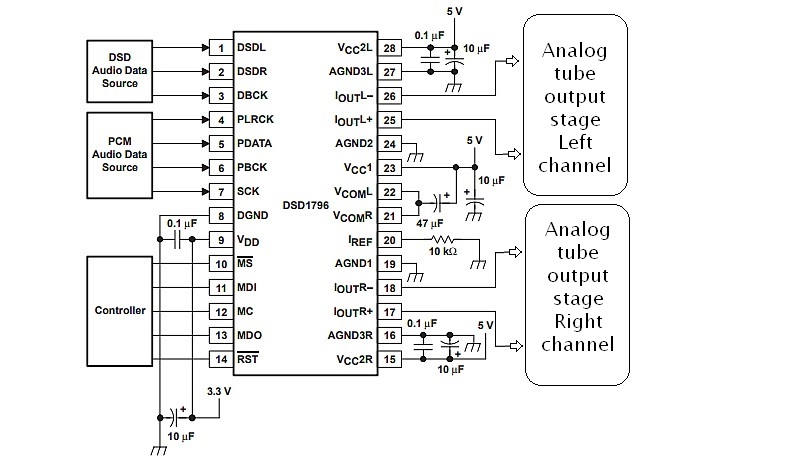
Remove the 3 SMD opamp U16, U17, U18 and solder 4 22 ohms 1% precision resistors as in following foto.
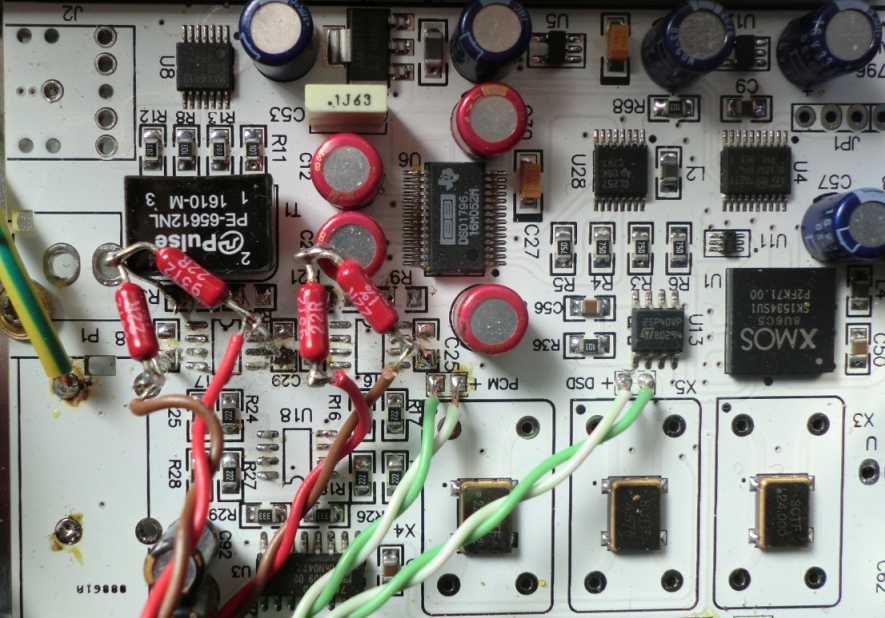
Connect the Sowter’s red / brown wires ( primary ) to the 22 ohm resistors and blue / white wires ( secondary ) to the 6N6P grids. Yellow wire to ground. Secondary side of the output transformer Lundahl LL1689 P-P can be connected for single ( RCA ) or balanced ( XLR ) mode. Refer to the Lundahl LL 1689 P-P data sheet for wire connection ( https://www.lundahltransformers.com/ ).
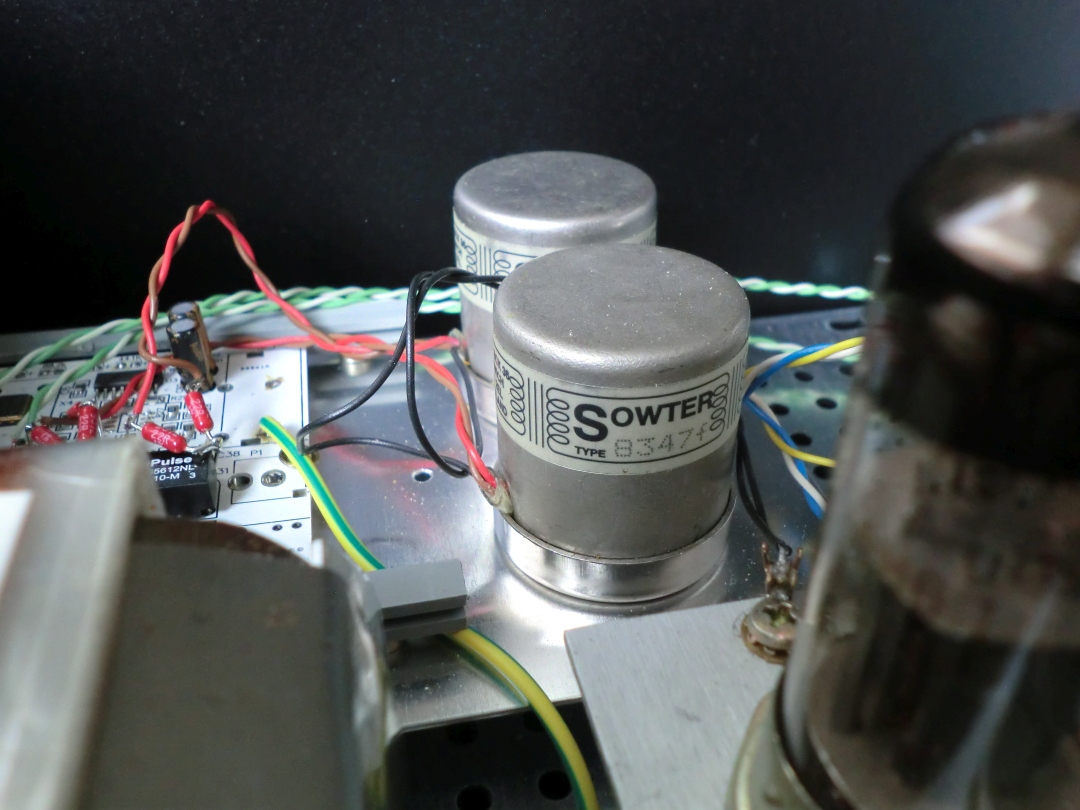
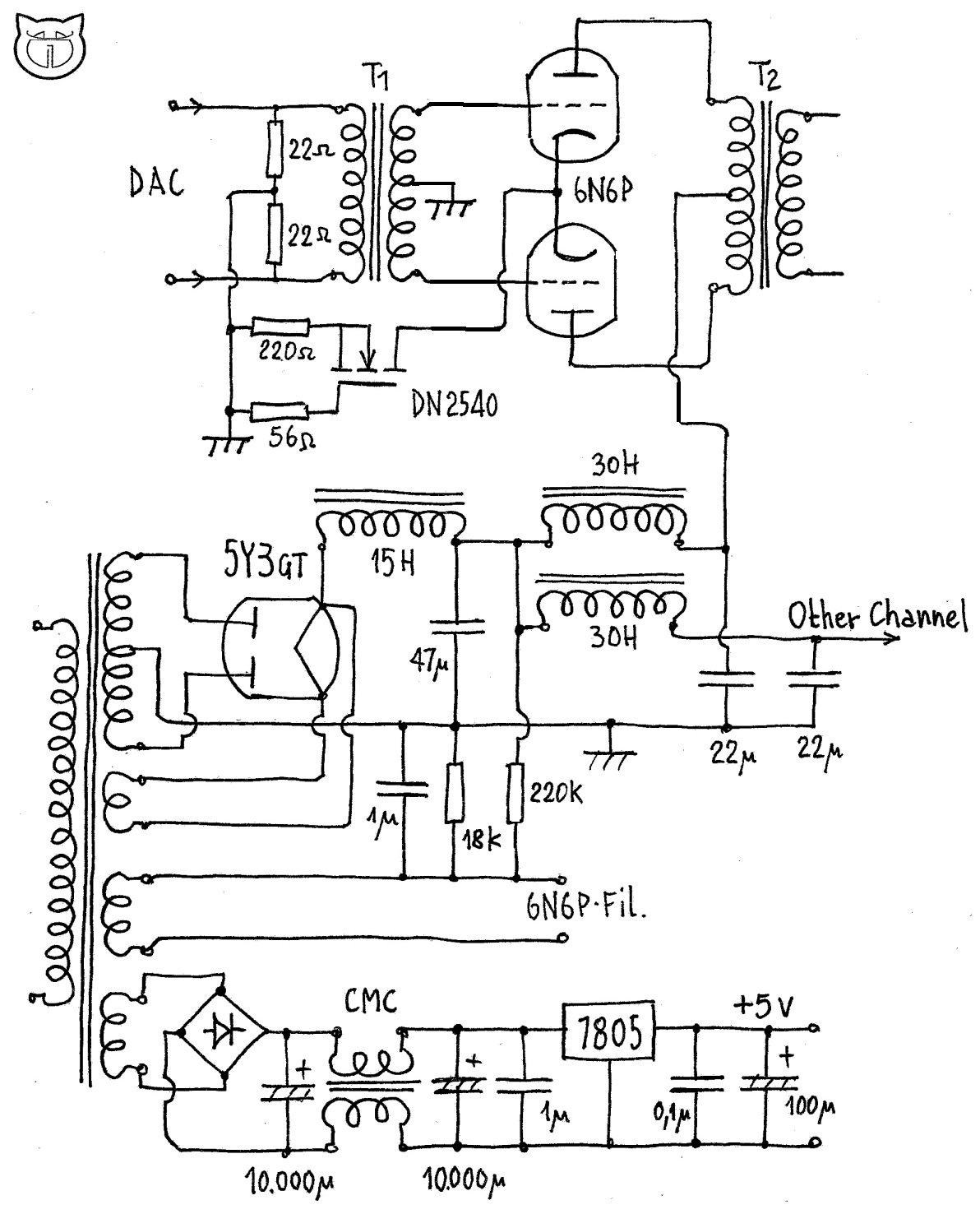
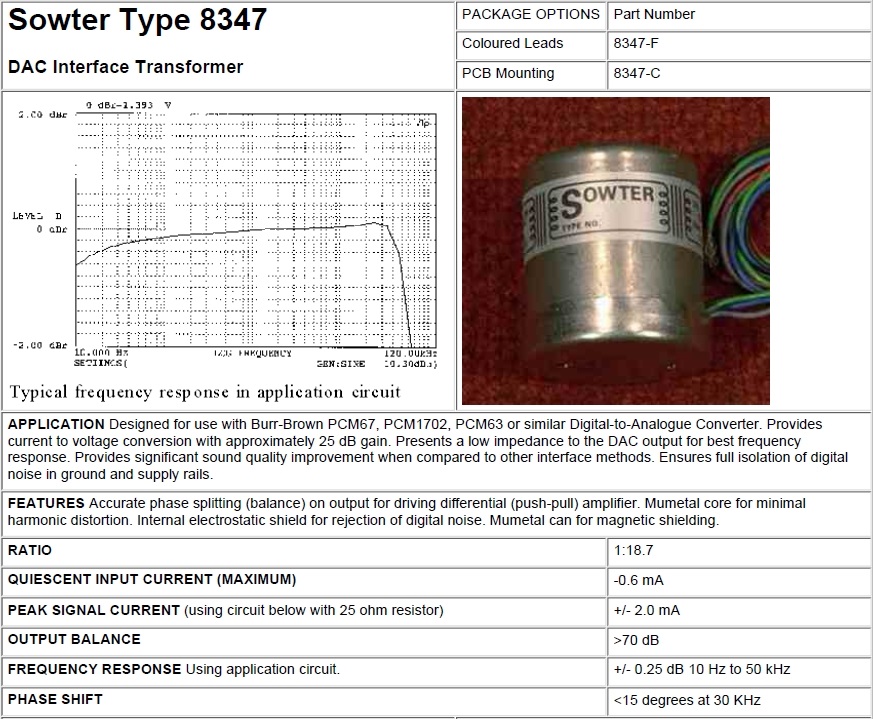
Remove also the 3 RCA sockets and the headphones output. Cut out the DC 5V input power supply connector and the toggle switch. Solder a little jump wire ( as in the photo) for permanent 5 V internal power supply.
For the anode voltage I used a power transformer with a 260 V CT at 100mA secondary, a 5 V at 2 A for 5Y3GT filament rectifier and a 6,3 V 1 A for 5 V DAC supply regulator. Use a bridge of schottky diodes in this last power supply and a 100 uF Sanyo Os-Con capacitor soldered on the Douk Audio board ( 5V DC in ). CMC is a common mode choke.
In the analog output stage I tried several tubes ( 6H30, E182CC,….), the best result in terms of balanced sound, wide and depth of the acoustic scene I got with russian 6N6P.

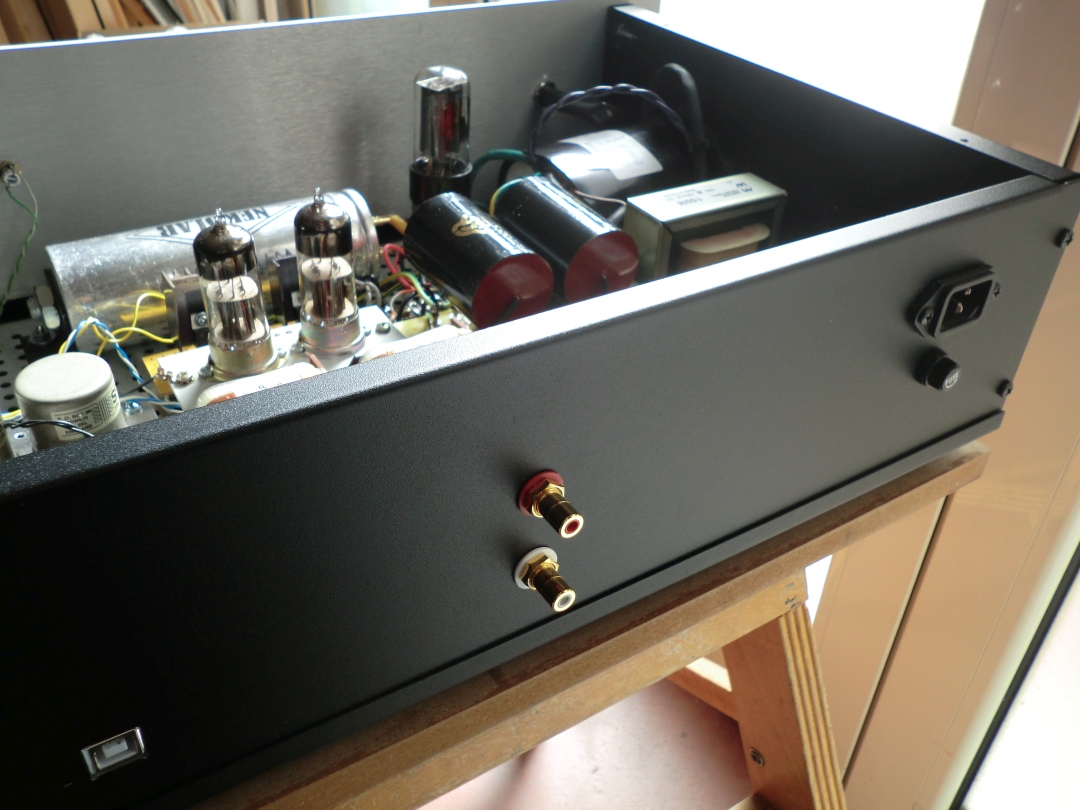



Be First to Comment